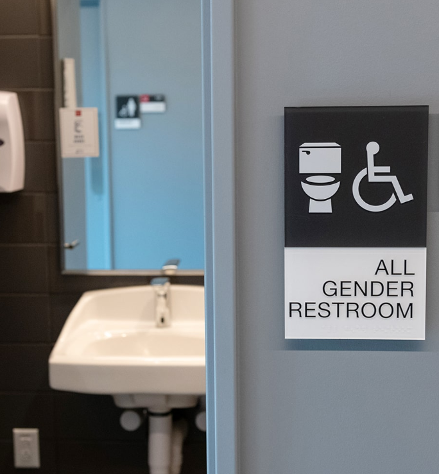
Rutgers Cancer Institute is currently undergoing several updates to create gender-affirming restroom facilities. Phase One of converting all single-stall restrooms to All Gender Restrooms was completed in December 2022. Phase Two of installing full-stall enclosures in multi-stall restrooms is slated for 2023. The project will conclude with ongoing Safe(R) Space Training for staff and faculty to learn more about the LGBTQ+ community and their health needs, including restroom access. Rutgers Cancer Institute is proud to follow the larger Rutgers University and Rutgers Biomedical Health Sciences in this shared effort of building inclusive spaces.
Frequently Asked Questions
Why Restroom Access Is a Health and Safety Matter
Gender identity is an intrinsic part of each person’s identity and everyday life. Accordingly, authorities on gender issues counsel that it is essential for employees to be able to work in a manner consistent with how they live the rest of their daily lives, based on their gender identity. Restricting employees to using only restrooms that are not consistent with their gender identity or segregating them from other workers by requiring them to use gender-neutral or other specific restrooms, singles those employees out and may make them fear for their physical safety. Bathroom restrictions can result in employees avoiding using restrooms entirely while at work, which can lead to potentially serious physical injury or illness.
Why use the language of “all gender” instead of “gender neutral”?
Many institutions still use the language “gender neutral” to describe their gender inclusive facilities. While this language is not “wrong” per say, there has recently been a shift to the phrasing “all-gender.” “Gender neutral” can imply an absence of expressed gender. The language of “all-gender” is preferred because it is explicitly inclusive of everyone.
Who is allowed to use the all gender restrooms?
Anyone – transgender or cisgender, gender non-conforming or gender conforming – is welcome to use an all-gender restroom. People who feel uncomfortable using all-gender restrooms or who would prefer using a gender-specific restroom (i.e. women’s room or men’s room) can still use these facilities instead. In addition to transgender and gender non-conforming communities, all-gender restrooms can benefit families, allowing parents with children of different genders to still accompany their child to the restroom.
Why use a toilet as a symbol as opposed to the half female/half male symbol?
When all-gender restrooms were first being introduced, a common symbol on signage was a hybrid image that was half-female/half-male. Some all-gender restrooms still employ this signage; however, many transgender individuals find the image offensive as it harkens back to pejoratives such as “shemale.” Additionally, the image reinforces a binary understanding of gender. For these reasons, recommended signage is that of a toilet symbol for all-gender restrooms.

